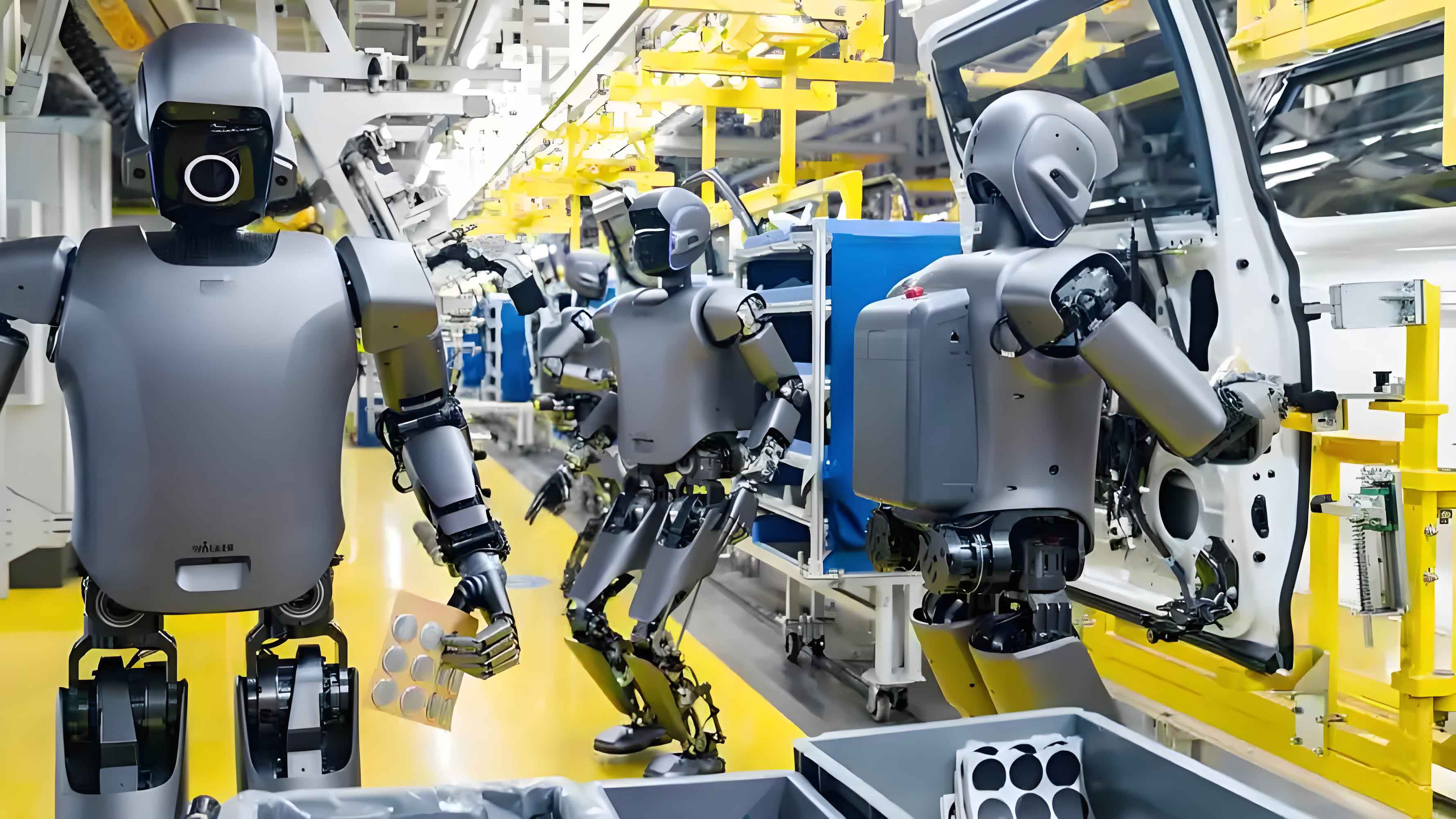
SHENZHEN, March 4, 2025 – Secretary of the Shenzhen Municipal Committee Meng Fanli conducted an extensive inspection tour of leading artificial intelligence and robotics enterprises on March 3, emphasizing the city’s determination to implement “extraordinary policy measures” for establishing a global hub for the robot industry. During visits to Tencent Robotics Laboratory, Shenzhen Rabbit Display Intelligent Technology Co., Ltd., Robosen Robotics, and Shenzhen Zhuji Power Technology Co., Ltd., Meng engaged in detailed discussions with executives about innovation pathways and development strategies for the robotics sector.
The inspection underscores Shenzhen’s strategic commitment to positioning itself at the forefront of the global robot industry. Meng directed relevant departments to proactively identify and create application scenarios throughout the urban ecosystem while strengthening service guarantees to support enterprises in expanding their operations domestically and internationally. “The artificial intelligence and robot industry possesses tremendous development potential and market space,” Meng stated, identifying it as a pivotal cluster in Shenzhen’s industrial upgrade blueprint.
Meng outlined six critical action areas for Shenzhen’s robot industry advancement:
- Policy and Institutional Innovation: Shenzhen will comprehensively refine its policy framework and operational mechanisms to address industry-specific needs. This includes optimizing business environments through full implementation of private enterprise support measures and establishing comprehensive housing and workspace systems. Such initiatives aim to attract global talent and enterprises to participate in Shenzhen’s robot industry ecosystem. The city will maintain its position as China’s most competitive robotics innovation habitat through continuous regulatory modernization.
- Citywide Application Scenarios: Urban infrastructure will transform into a testing ground for robotics technologies through the “Artificial Intelligence+” and “Robotics+” initiatives. Every potential application scenario across industries will be systematically cataloged and developed. Policy frameworks for first-set equipment, first-batch products, and first-edition software adoption will be strengthened to accelerate the integration of robotics solutions across manufacturing, healthcare, logistics, and urban services. This comprehensive approach ensures the entire metropolis fuels the expansion of the robot industry.
- Enterprise-Led Innovation: Companies will anchor Shenzhen’s innovation infrastructure with intensified R&D investment across the robot industry value chain. The city will foster deeper integration between industry, academia, and research institutions while strengthening international talent collaboration. This strategy targets the formation of a market-oriented innovation ecosystem where industry demand drives technological breakthroughs across the robotics sector, reinforcing Shenzhen’s competitive position in the global robot industry.
- Resource Allocation Optimization: Strategic resource prioritization will focus on computational power, data access, and specialized industrial spaces. Financial support mechanisms will evolve to cultivate “patient capital” and “bold capital” investment vehicles specifically for robotics ventures. This resource realignment ensures concentrated support for scaling the robot industry, addressing critical bottlenecks from prototype development to mass production.
- Industrial Ecosystem Development: Shenzhen will pursue balanced advancement in both robotics hardware and software domains. High-standard industrial clusters and specialized zones will emerge through targeted development of innovation platforms and infrastructure. The robot industry supply chain will undergo systematic enhancement through strategic supplementation and extension initiatives, strengthening Shenzhen’s position in the global robotics value network.
- Scale Acceleration and Cluster Formation: Aggressive investment attraction and talent recruitment programs will rapidly expand the robot industry’s operational scale. Through focused enterprise cultivation and concentrated resource allocation, Shenzhen aims to achieve critical mass in robotics commercialization, transforming technological innovations into substantial economic contributions. This growth trajectory will cement Shenzhen’s status as a globally influential robotics hub.
During enterprise visits, Meng examined cutting-edge robotics applications ranging from industrial automation systems to consumer-facing intelligent solutions. At Tencent Robotics Laboratory, executives demonstrated progress in embodied AI and human-robot interaction platforms. Rabbit Display showcased AI-powered marketing automation tools with robotics integration, while Robosen highlighted educational and companion robotics advances. Zhuji Power presented innovations in dynamic motion control systems for next-generation industrial robots.
Industry analysts recognize Shenzhen’s unique advantages for robotics leadership, including its electronics manufacturing ecosystem, software development talent pool, and venture capital density. The city hosts over 1,000 AI and robotics enterprises, contributing to Guangdong Province’s position as the source of one-third of China’s industrial robot production. Recent municipal initiatives include specialized robotics industrial parks in Bao’an District and Qianhai, alongside tax incentives for R&D investment exceeding 10% of annual revenue.
| Strategic Pillar | Key Initiatives | Expected Industry Impact |
|---|---|---|
| Policy Ecosystem | Regulatory sandboxes, talent housing programs, cross-border data policies | Accelerated startup formation in robot industry |
| Technology Commercialization | City-as-testbed programs, procurement preferences, standards development | Reduced commercialization timelines for robotics firms |
| Industrial Clustering | Specialized zones, supply chain mapping, anchor tenant recruitment | Enhanced robot industry supply chain resilience |
| Financial Infrastructure | Robotics-focused VC funds, R&D tax credits, manufacturing subsidies | Increased investment scale in robot industry ventures |
Meng’s directives align with broader national priorities outlined in China’s Robotics Industry Development Plan (2021-2035), which targets global technological leadership in intelligent robotics. Shenzhen’s approach uniquely combines municipal resources with private sector dynamism, creating fertile ground for robot industry advancement. The city’s robotics sector recorded 18% year-on-year growth in 2024, outpacing national averages and attracting over ¥20 billion in venture funding.
Implementation responsibilities fall to newly established robotics development task forces reporting directly to municipal leadership. These cross-departmental teams will coordinate application scenario development, streamline regulatory approvals, and monitor industry growth metrics. Their mandate includes quarterly progress assessments and policy adjustment recommendations to maintain Shenzhen’s competitive positioning within the global robot industry landscape.
Concluding the inspection tour, Meng reiterated robotics’ centrality to Shenzhen’s economic future: “Our focused advancement of the robot industry represents a strategic investment in next-generation productivity. Through concentrated resources and institutional innovation, we will transform Shenzhen into the indispensable hub for robotics development and commercialization worldwide.” Municipal leaders Tao Yongxin and Zheng Hongbo participated in the comprehensive enterprise engagements.